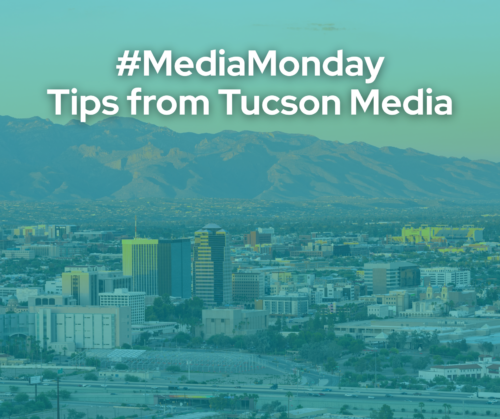#MediaMonday – Tips from Tucson Media
Reporters receive hundreds, sometimes thousands, of emails a day, reading through countless pitches and stories from public relations professionals like us. But what are local media in Tucson looking for? And how can we pitch them more efficiently and effectively?
A recent PRSA Southern Arizona panel featuring some of Tucson’s leading journalists offered some details into the stories that resonate, how their newsrooms operate, and what PR pros can do to make coverage more likely. One message was clear: make it local, make it relevant, and make it easy.
Megan Butler, Assignment Manager at KOLD, oversees a massive 11 and a half hours of on-air broadcast each weekday, in addition to six hours of digital broadcast. She is always looking for a story with a local angle and will resonate with a local audience. This means national content like awareness months or the headlines nationally can work if it is tied to the local people, businesses, or nonprofits of Tucson that make sense in this story.
Rather than sharing your upcoming event in Tucson, consider who will benefit from it. Always think, “how does this matter to Tucson?”
Those working in the media today also encouraged the message of quality over quantity. Make certain your press release has the full range of who, what, when, where, why, and most importantly, who is available to speak, where they’re located and when they are available. Always pitch with substance.
Availability is key. Let journalists know if your spokesperson is available for in-person or virtual interviews, and be flexible. In-person is still preferred when possible.
Robbie Reynold of KVOA emphasized availability, and made clear that time commitment is often minimal. For journalists, Robbie mentioned, their whole day is often just going to see people. Try to remain flexible and open to both in-person and virtual interviews if needed. This flexibility builds trust and future coverage.
Joe Ferguson of the Tucson Agenda, a daily newsletter focusing on local government, politics, stressed the importance of knowing your audience and building long-term relationships that can provide the experts and insights he needs at a moments notice. This flexibility is what builds the trust that makes effective stories as they rely on consistent, trustworthy sources to turn timely local government and political stories.
Understanding the journalists and outlets we pitch is always central to our job as public relations professionals.
Similarly, Hannah Cree of AZPM radio, whose coverage focuses mostly on state and local government, with stories rooted in city council, education, and legislative issues, echoed this. Hannah noted the importance of timeliness in stories to prevent repeating content and of course availability. Working in radio, Hannah also cautioned that human interest stories without a strong visual component may not translate well to radio, they could be a better fit for TV or podcast formats.
Wherever you pitch, know your newsroom, tailor your approach, and trust your local media to help tell stories that matter.

